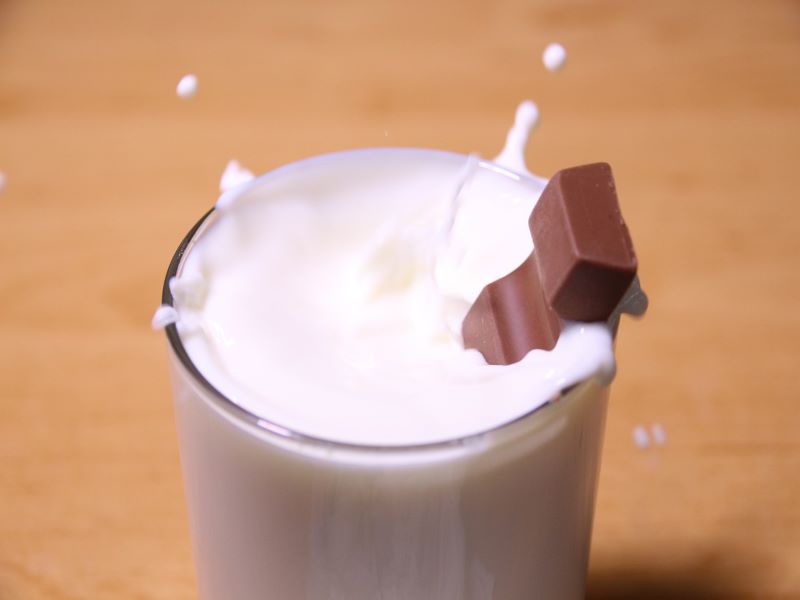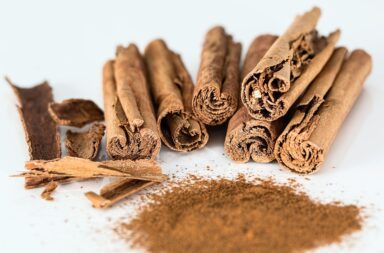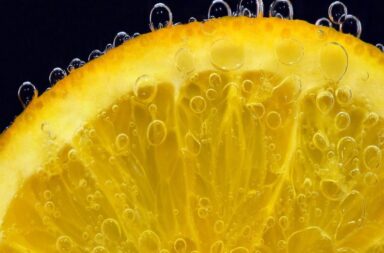Improving your recovery has many benefits. Less discomfort after a workout, a shorter turnaround between sessions, and greater gains in muscle size and strength. But there is some confusion as to which recovery methods work best. Does water help muscle recovery? If so, how?
Water can help muscle recovery in a number of ways. Ice baths can help to reduce inflammation, which can reduce the impact of DOMS. Staying hydrated also has a positive effect on recovery. Epsom salt baths may also aid recovery.
In this article, we will take a look at the different ways in which water can help to aid recovery.
Does Water Help Muscle Recovery?
Not only does water help with muscle recovery, but it helps in a variety of ways. Drinking water can help to keep you hydrated, which lessens the impact of delayed onset muscle soreness (DOMS).
While the discussion surrounding the effectiveness of ice baths rages on, it is generally agreed that they can help reduce inflammation.
A hot bath, the day after a workout, can help to promote blood flow and reduce soreness and stiff muscles. Finally, you have Epsom salt baths, that are very effective at relaxing tired and stiff muscles.
Does Cold Water Help Muscle Recovery?

Image by Ryan McGuire from Pixabay
Ice baths are very popular with strength and conditioning coaches (and quite unpopular with the athletes themselves). You will see athletes using them immediately after a match as their initial recovery strategy. But cold water therapy is not without its critics.
The theory is that ice cold water will stifle inflammation immediately, which will prevent your muscles from swelling and becoming sore. This is very useful for athletes, as they need to recover fast for the next game.
But inflammation is crucial for your muscles to grow stronger and adapt to more challenging training. This is why many people argue against using it after a regular workout. If you are constantly interrupting the inflammation response to exercise, then your results may be impacted.
The potential solution here is to use cold water therapy strategically. Most people suffer from DOMS when they are starting a new training program and depending on how bad they are suffering it can prevent them from training regularly.
In this case, using ice baths (or very cold showers) could be very helpful. Use this for the first two weeks, and by that point your body should have adapted enough so that DOMS no longer affects you. Then only use ice baths after very intense workouts.
Does Hot Water Help Muscle Recovery?

Image by ErikaWittlieb from Pixabay
Hot water can help with muscle recovery, but it is not as effective or as immediate as cold water. Whereas cold water therapy needs to be performed immediately after a workout, hot water therapy works best when applied one or two days afterwards.
Hot water helps by increasing blood flow, which helps to provide your tired muscles with the nutrients required for recovery. Hot baths are not miracle workers, but they are pleasant and will contribute slightly to your recovery. Hot showers can also work.
Does Hydration Help Muscle Recovery?
Hydration is certainly helpful for muscle recovery, but not in the way that the other methods are helpful. Ice baths, hot baths, and Epsom salt baths are all designed to be taken after a workout, whereas a hydration strategy should start before and during a workout.
Exercise can dehydrate you; this is due to you losing water via sweat and breath during a workout. If you do nothing to address this before, during, or after your workout then you are likely to become chronically dehydrated.
This can exacerbate DOMS, and slow down recovery. Mild dehydration does not appear to influence recovery too much, but the more extreme it gets, the more likely you are to suffer from poor recovery.
Water can help to speed up recovery, by allowing your body to work at an optimal level. Being hydrated can help with the delivery of nutrients to muscles, and the removal of toxins. Try drinking a glass of water first thing in the morning for even better results.
What is the Best Drink for Muscle Recovery?
Water is incredibly useful for muscle recovery, but is it the best option? There are a number of options when it comes to drinks to improve muscle recovery. Many fitness experts recommend coconut water as a post-exercise drink, as it not only hydrates you but restores electrolytes that are lost through sweat.
Another common drink that is used for recovery is chocolate milk. As an immediate post-workout drink, chocolate milk contains a 3-1 ratio of carbohydrates to protein. It doesn’t have to be dairy either, soy milk works just as well.
Caffeine, in the form of coffee or tea, is another effective drink for muscle recovery. Caffeine can help with muscle glycogen recovery, it can also help to block the pain that is associated with DOMS.
Do Epsom Salt Baths Work?
Epsom salt baths work in two ways. The first way is that they are hot baths so will provide the same benefits as we mentioned earlier in the hot water section. Increased blood flow and relaxed muscles. They also help because the magnesium in the salts is released which can help to relax your muscles and make sleep a lot easier.
Sleep is the number one recovery method, and painful muscles can make sleep more difficult, which is why Epsom salt baths are so useful.
What Helps Muscles Recover Quicker?
Alongside water, there are a number of other recovery strategies that you can employ to speed the process up.
- Caffeine – as mentioned earlier, caffeine can help muscles to recover their glycogen stores, but it can also help to reduce the perception of pain and fatigue. If you have to train the next day, then caffeine is the best option.
- Gentle Exercise – Though it may not feel like it when you wake up with your muscles in agony, one of the best methods for recovery is to perform some gentle exercises. Yoga is great for getting blood pumping through your muscles, it can also help with your mood. Just adding some walking into your daily schedule could make a big difference.
- Sleep – Your body recovers best while you sleep, so make sure that you are getting your 8 hours whenever you work out. Studies have shown that extended sleep (9-10 hours rather than 8) can be incredibly beneficial for performance, it can also help improve mood and cognition.
- Foam Rolling – There is a lot of evidence that foam rolling can help to relieve the pain that is associated with DOMS, and it is a great recovery strategy for relieving tired muscles and preparing you for your next workout. Check out our article on foam rolling to see how many calories a foam roller session can burn.
Your Recovery Strategy
So, what should you do to speed up recovery? Here is a step by step recovery strategy for you to follow next time you go to the gym.
- Step One: Drink lots of water to stay hydrated, this will prevent dehydration which can impede recovery
- Step Two: Ice bath (if particularly intense workout). This needs to be done within 30-60 minutes of your workout. Otherwise, it won’t work.
- Step Three: Post-workout meal. High in protein, high in carbohydrates, your body will use the protein and carbohydrates to replenish muscle glycogen and begin the process of muscle repair.
- Step Four: Sleep 8 hours (or more). Getting more sleep than usual will help your body to recover from your workout better.
- Step Five: Hot bath or shower. This will improve blood flow and relax your muscles, try it first thing in the morning.
- Step Six: Drink caffeine. Having a coffee can help to replenish muscle glycogen, and it can also help to block the perception of pain. Making it easier to move around pain-free.
- Step Seven: Gentle exercise. Go out for a walk, try some yoga, just do some light exercise to increase blood flow to the muscles.
- Step Eight: Foam rolling. Spend 15-20 minutes foam rolling, this may help to reduce some muscle stiffness.
- Step Nine: Epsom salt bath. A nice way to finish your day of recovery, and perfect just before bed.
As you can see, water plays a major role in almost every step. Keeping you hydrated, dealing with blood flow to tired muscles, and preventing inflammation from ruining your day.
Frequently Asked Questions
How Many Days Rest for Muscle Recovery?
This depends on how intense the workout was, and whether you are a beginner or not. New gym-goers may need 2-3 days to fully recover. Long-term gym-goers may not even need a day to recover. Usually, a day’s rest is optimal.
What Vitamins Help Your Muscles Recover?
Rather than taking one vitamin or another, just try to ensure that you are getting all of your vitamins via your diet. Vitamin D supplementation may be helpful in winter though.
What is the Best Supplement for Muscle Fatigue?
Caffeine is great at banishing fatigue temporarily. Creatine is also effective at treating muscle fatigue. Neither supplement beats good rest and recovery strategies!
Does Water Help Muscle Recovery? Final Thoughts
Water is incredibly useful if you are looking to recover from an intense workout. Not only can it address dehydration, but it can also be used (hot or cold) to reduce inflammation, increase blood flow to the muscles, and to remove toxins that are associated with muscle pain.
Using water as part of a wider recovery strategy will get you much faster and more effective recovery times, and it will allow you to train more regularly without increasing your risk of injury. This will provide better results in the long term.




